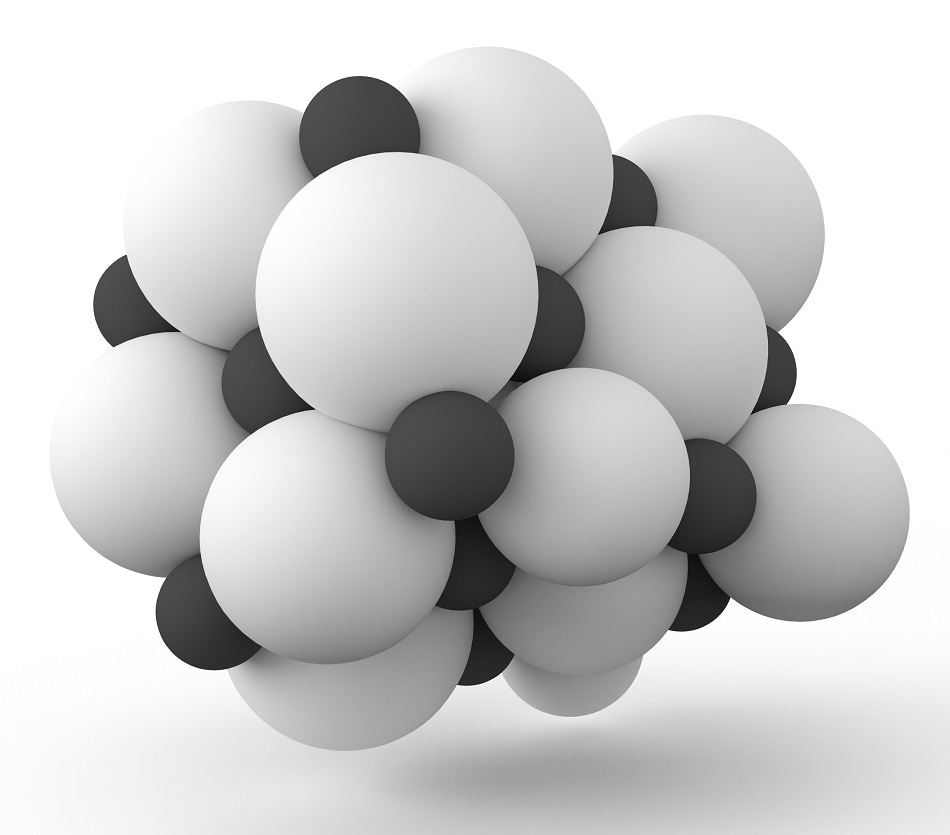Both glass fibers and clay particles can be incorporated into polymer matrices to create highly desirable polymer composite materials, which are now used in a wide variety of applications. Both types of composites possess a series of desirable properties that facilitate their versatile use. In this article, we look at these two types of composites, their properties and the applications that they are used in.

Image Credits | shutterstock.com/klyuchnikovart
Nano-Polymer Clays
The nature of how polymer clays work only has only recently come into fruition however this has led to the understanding that they have been around for a long time in the form of latex paints, carbon-black filled tires and polymer nanoparticle systems. Nano-polymer clays are a type of composite material where clay nanofiller layers are dispersed in a polymer matrix – the most common being organoclays and organically treated layered silicates, with layers of montmorillonite being the most widely used.
Many composites suffer from poor interfacial bonding between the filler and the matrix, which then leads to a loss of beneficial properties and the occurrence of negatively impacting properties. However, when the filler is of nanomaterial dimensions, these effects are significantly reduced (to the point of non-existence) because the higher surface area of the nanomaterials enables a more efficient dispersion and bonding within the matrix. The incorporation of nanosized materials also magnifies the beneficial properties of a composite, compared to when micron sized materials are used.
Nano-polymer clays are known to have a high strength, a high flame retardance, a high tensile modulus, low weight and a high resistance to heat distortion. As such, they can be used for a wide range of applications, including as flame-retardant materials, as structural materials, in automotive engines, as mechanical reinforcement materials in thermoplastics and as gas barrier materials in food/liquid packaging.
Glass Fibers
As the name suggests, glass fibers are a material that consists of a large number of fibers made from glass. The most common material that glass fibers are composited with are polymers, also known as glass-reinforced plastics.
However, it is not quite as simple as just glass and plastic, because there are many different forms of glass fiber that are commercially available. As such, glass fibers can be made from a range of materials, including soda lime silicate, zirconium silicate, calcium borosilicate, alumina-calcium borosilicates, calcium aluminosilicates and magnesium aluminosilicates. Likewise, there are a range of polymers which can be used as the main composite matrix.
The silica content of the fiber must be greater than 50% and the different composition of metal oxides within the fiber give each fiber (and fiber composite) different properties. So, it is quite straightforward to tune the properties of glass fiber polymer composites for a given application (especially when the polymer matrix properties can be varied depending on the polymer used).
Because each type of glass fiber has different properties, they can be used for a wide range of applications. When most people think of glass fibers, they think of either glass optical fibers used in communication technologies and in glass wool used for insulating a loft. However, there are many other applications/environments out there where glass fibers can be used, including structural reinforcement, containers and windowpanes, as a composite in highly acidic environments, electronics, as a general-purpose material which provides strength and electrical resistance, and as a material for use in high temperature environments.
Even though the properties vary between types, there are a series of properties that are present across almost all glass fibers. The one property that generally isn’t present, unless it is a calcium borosilicate glass fiber, is a high chemical resistance, and most glass fibers can be susceptible to chemical attack. However, glass fibers on the whole have a high strength, a high surface area to weight ratio, good thermal insulating properties, and they can undergo a high degree of elongation before they break (i.e. a high tensile strength and elastic modulus).
When the Two Materials Meet
There are examples where glass fibers can be implanted into nano-polymer clay composites. These are known as glass-fiber reinforced nano-polymer clay composites and can be used in structural applications. These types of composites are not as well-developed but their level of development isgrowing. The reason for the development of these hybrid composites is to address some of the issues surround glass fibers (chemical corrosion stability etc) whilst taking advantage of the beneficial properties exhibited by both material classes. Current developments have shown that mechanical properties, heat distortion temperature, fire retardant properties and barrier properties can be improved against the two precursor material classes.
Sources:
Net Composites: https://www.compositesworld.com/
Prince Engineering: https://www.build-on-prince.com/glass-fiber.html
Sigma Aldrich: https://www.sigmaaldrich.com/technical-documents/articles/material-matters/polymer-clay-nanocomposites.html
“Polymer Nanocomposites—A Comparison between Carbon Nanotubes, Graphene, and Clay as Nanofillers”- Bhattacharya M., Materials, 2016, DOI: 10.3390/ma9040262
“Review on the Processing and Properties of Polymer Nanocomposites and Nanocoatings and Their Applications in the Packaging, Automotive and Solar Energy Fields”- Muller K. et al, Nanomaterials, 2017, DOI: 10.3390/nano7040074
“A Review on Potentiality of Nano Filler/Natural Fiber Filled Polymer Hybrid Composites”- Saba N., Polymers, 2014, DOI: 10.3390/polym6082247
“GLASS-FIBER REINFORCED POLYMER-CLAY NANOCOMPOSITES IN STRUCTURAL APPLICATIONS”- Qureshi M. A. M., PhD Thesis- West Virginia University, 2009
Disclaimer: The views expressed here are those of the author expressed in their private capacity and do not necessarily represent the views of AZoM.com Limited T/A AZoNetwork the owner and operator of this website. This disclaimer forms part of the Terms and conditions of use of this website.